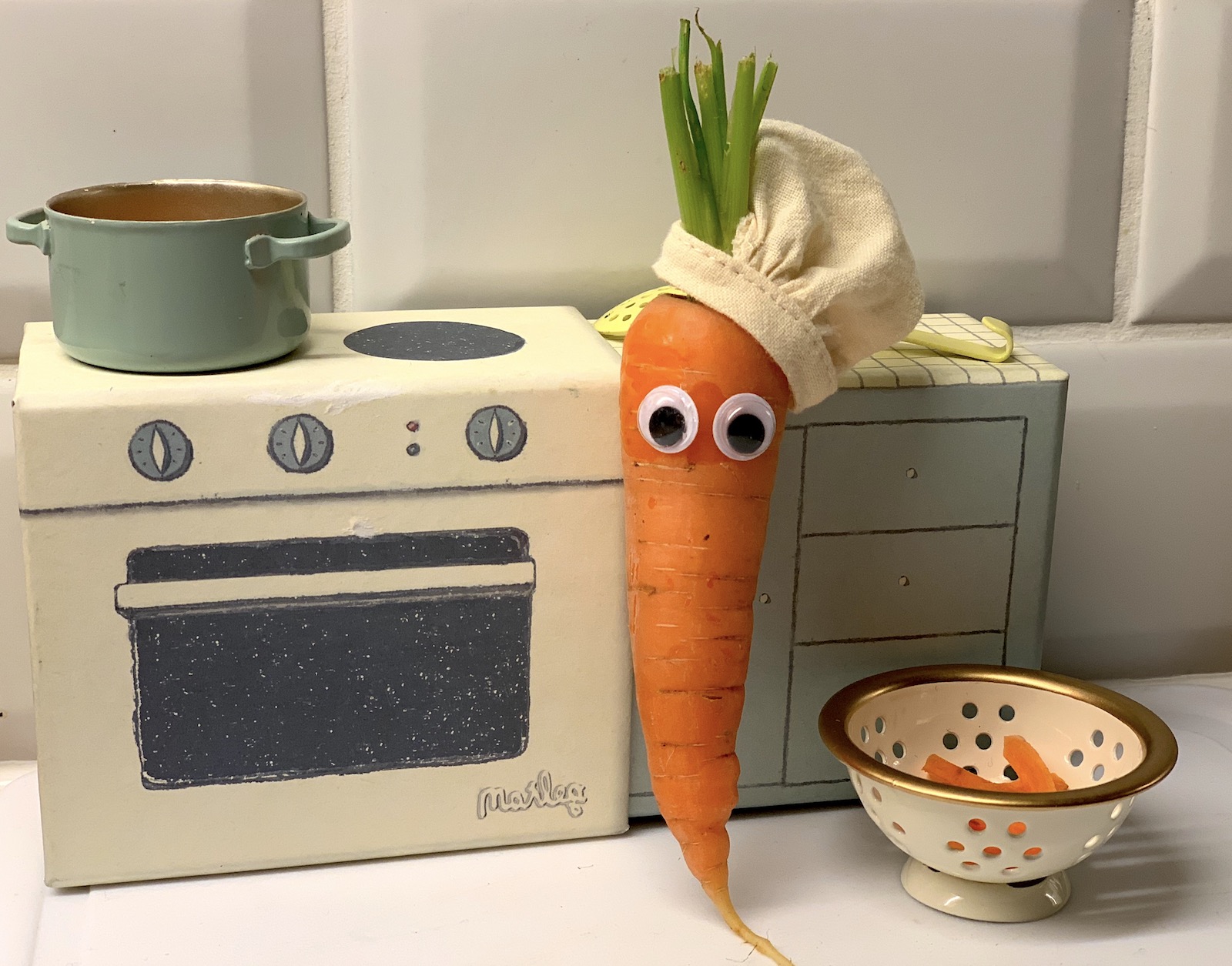What Actually Are Carrots?!
The History Of Carrots
Carrots today are derived from its predecessor the wild carrot which is a white flowered plant native to Europe and South-western Asia. The domesticated carrots that we eat today are orange due to GMO, but the original carrots are believed to be purple originating in Afghanistan. The orange carrots we commonly know and love today are thought to have been bred by Dutch cultivators in the 1600’s.
Carrot Consumption In The UK
The carrot is one of the UK’s most popular root vegetables, and Britain produce over 700,000 tonnes of carrots each year and with that amount the yearly sales value of British carrots is around £290 million.
With 22 billion carrot seeds sown in Britain annually, there are around 100 carrots a year per member of the population!
Nutritional Benefits Of Carrots
Ways To Prepare & Cook Carrots
First things first, carrots need to be washed thoroughly as they grow underground they can still have dirt on them. Usually carrots are peeled which helps remove any surface dirt, but they can be eaten skin on too.
When eaten raw it’s normally in the form of sticks with dip such as hummus or shredded/grated for coleslaw and salads, which adds a great crunchy texture. Carrots are best cooked steamed, roasted or boiled as they soften up and are nice in a traditional English Sunday roast or a hearty stew!
How Should Carrots Be Stored
Like many fruit and veg, carrots can be kept in gastro trays and stored in the fridge, but if the leaves are still attached be sure to trim those first. Once peeled and chopped you can store carrots in water to stop them from drying out, this is a great way to store carrot sticks to keep them fresh for days.
P.S. If you do decide to trim the tops, you can make a great pesto with the off cuts!
Why Are Carrots Orange?
FUN FACT! Carrots were originally white and purple, but were genetically modified to be orange. Their orange colour comes from the chemical compound beta-carotene, the purple from anthocyanin and the white from lutein. It is believed that Dutch carrot farmers started growing the new orange carrots in honour of William of Orange from Nassau (originally William the Silent) who inherited rule in the Southern French town Arausio aka orange. He led the Dutch revolution against the Spanish and won them their independence!
How Are Carrots Grown?
Carrots are part of the Apiaceae or Umbelliferae family which consists of mostly aromatic flowering plants such as celery, carrots and parsley
As root vegetables the part of the carrot we eat – the taproot – grows underground and the leafy green carrot tops grow above ground to allow for photosynthesis to help with growth. The carrot tops grow flowers that produce seeds when pollinated by insects, which can then be replanted to make more carrots.
Where Are Our Carrots Grown?
We are passionate about supporting British farming and source our produce locally wherever possible. We work with great suppliers to source local carrots when in season. The Firs Farm, Yorkshire is home to Guy Poskitt who supplies us with parsnips & carrots. The land is ideal for these root vegetables due to the sandy soil. The products are grown, washed, packed & distributed all from the farm to enable them to control all aspect of the production. Family-run business Huntapac Produce in Holme – Lancashire also supply us with some of our delicious carrots and we have found them to grow consistently good products.
Varieties Of Carrots
Danvers
Chantenay
Heritage
Yellow Heritage
Our Carrots
Here you can find some of the varieties of carrots we stock, when available. Please contact our team to discuss your requirements, or login to our online ordering or app to place your order.
Recipes With Carrots
Here’s some delicious carrot-y recipes to provide inspiration for your menus!
Salted Caramel Carrots
Kale, Cranberry, Carrot And Orange Salad
Southern style Seitan Burger, Caramelised Onion Crisps, Ranch Cucumber & Carrot Slaw, Crispy Caramelised Onions
Join Our Mailing List
By signing up to Oliver Kay e-mails, you confirm that you’re aware your personal data will be used in line with our Terms and Conditions and our Privacy Policy.


